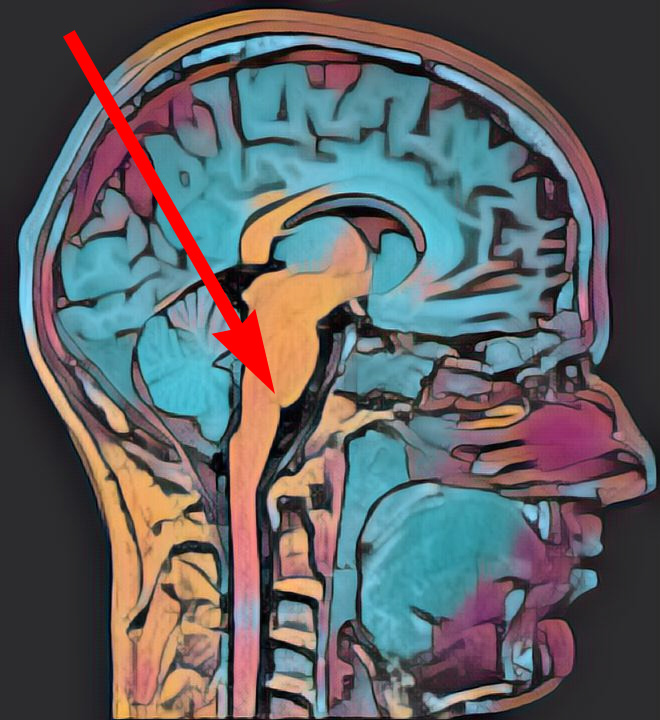Eye Movement Desensitization and Reprocessing (EMDR)
EDMR is a treatment originally developed to treat distress associated with traumatic memories (Shapiro). In a nutshell, the therapist asks a person to recall unpleasant memories and at the same time gives instructions for moving the eyes.
The technique has come to be used for treatment of children exposed to trauma and adults with post traumatic stress disorder. Although the exact mechanism of why it works is not fully understood, more than thirty research studies confirm the technique is helpful for many.
The most obvious question is: what does eye movement have anything to do with memories?

The simple answer is because of a connection in the brain stem (see the red arrow in the illustration). That area in the brain is a biologic signal router with similarities to a home WiFi router. Among other things, this internal router connects to the muscles of the eyes, the emotion processor (limbic system) and the brain’s memory bank (cerebral cortex). Under normal circumstances, events of the day are evaluated, connected to emotional factors, categorized, and stored. Usually, the limbic system regularly clears out the daily emotional baggage to be fresh for new feelings.
The Sleep Connection
Much of the event categorization happens while we sleep and dream. Stage five sleep occurs about once an hour and is associated with rapid eye movement. EYE MOVEMENT. Dr. Shapiro postulated that when awake, intentional eye movement might have an effect on memories and emotions. She seems to be correct.
The recurrent memories of trauma (post traumatic stress disorder) contain high levels of emotion. The current theory is that those memories are so toxic they stay in the limbic system and fail to be categorized and stored. They are constantly on the mind, constantly dredged up with the slightest reminder.
The Therapy
A psychotherapist can guide a person with traumatic memories through a series of mental steps concentrating on a past traumatic event, present triggers for recalling the trauma and future pitfalls. At specific times during psychotherapy, the trauma victim is asked to move their eyes in a certain way — like back and forth. More recent research indicates that bilateral hand tapping or simultaneous sounds applied to the ears may have the same effect.
The Result
The activation of the brain stem by eye movement or other bilateral stimuli sets an environment for categorization and storage of harmful memories, which over time moves them out of the limbic system. The result is a gain in control over traumatic memories so they are like any other memory. If the person can categorize an event as a long-past survival story, they may not be compelled to revisit the details. And, if they do, the memory does not circulate around in their thoughts. Life is better.
Reference:
Shapiro, F (2001). Eye Movement Desensitization and Reprocessing: Basic Principles, Protocols, and Procedures. Guildford Press.

